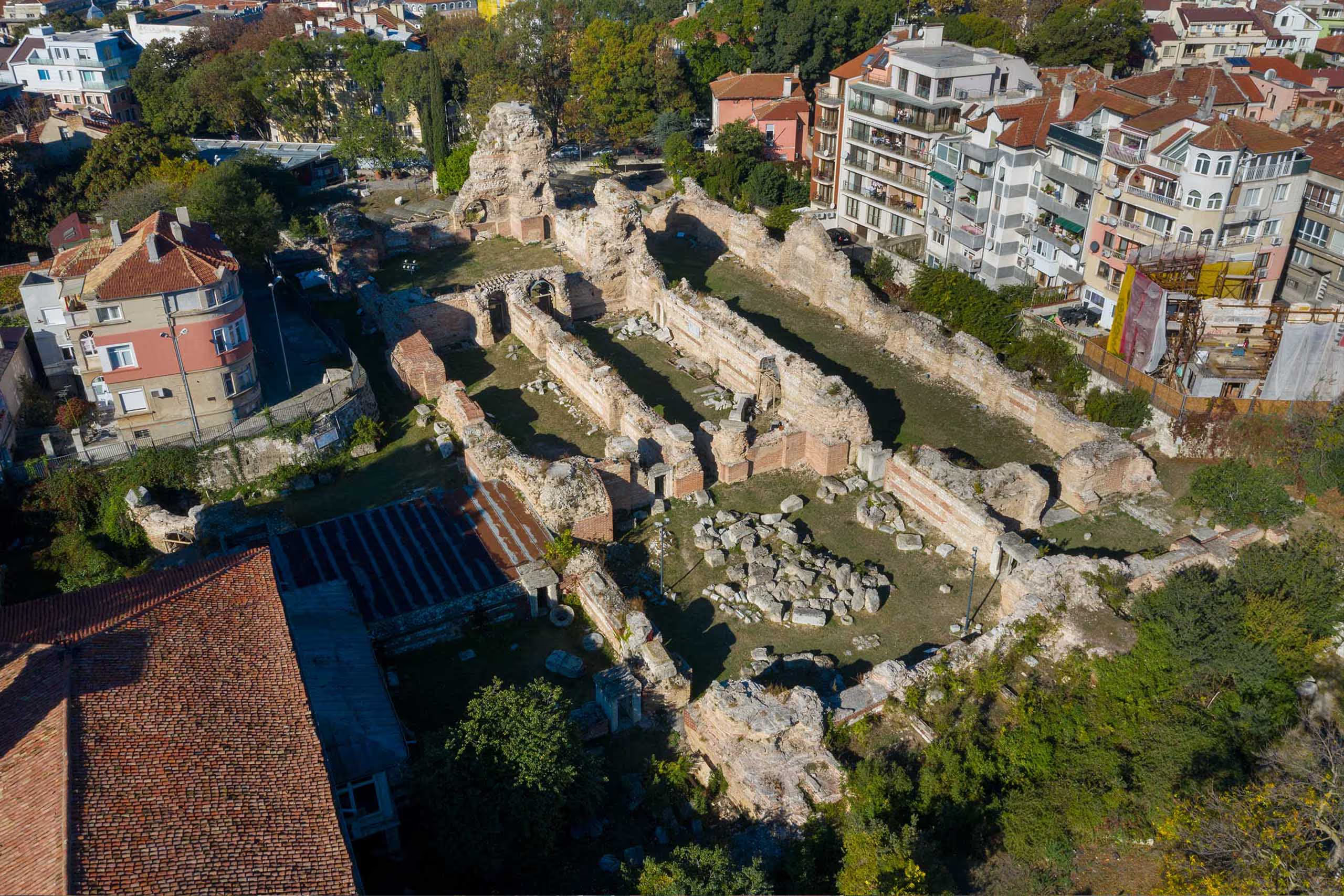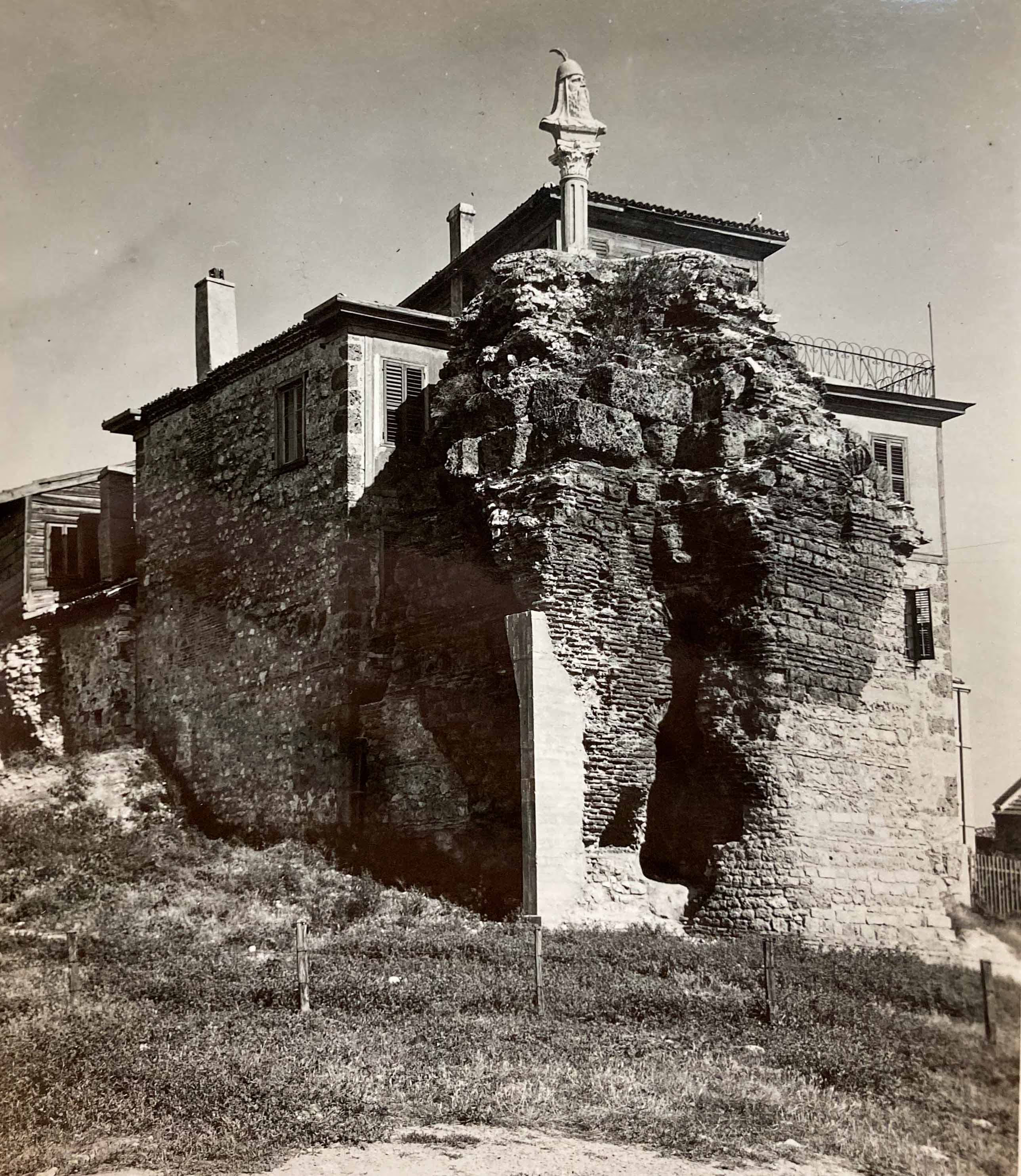
Датировка
2nd - 3rd century AD.
Кратка информация
The Roman Baths, or known among Varna residents as the "Large Roman Baths", are located in the central part of ancient Odessos and in the historical core of today's Varna. The object is the largest public ancient building discovered so far in Bulgaria. In its modern limits, the excavations occupy an area of nearly 7,000 square meters, and the preserved walls reach a height of up to 22 m in places.
The dating of the site refers to the end of II - beginning of in the 3rd century AD and is determined by the coins found on the spot, the earliest of which were minted during the time of Emperor Septimius Severus (193 - 211), and the latest from Imp. Tacitus (275). end of II - beginning and the 3rd century AD. From the bilingual inscription in Greek and Latin languages it is clear that during the reign of Emperor Antony Pius (138-161) the municipality of Odessos and the military governor Titus Vitrasius Pollio captured and brought to the city by tap water This is believed to have happened in AD 157.
Architecturally, the thermal baths have a symmetrical plan and belong to the so-called "small imperial type". According to the studies, the height of the vaulted structures was over 20 m. Although the structure of the site partly falls under existing residential buildings, today all the main and service rooms have been revealed - two entrances, vestibules (vestibulum), dressing rooms (apoditerium), bathing rooms with cool (frigidarium), warm (tepidarium) and hot (caldarium) water, pools, palaestra, underground galleries, etc. The heating system, the so-called hypocaust /hypocaustum/, is an ancient Greek invention from the 5-4th century BC. It is a special installation - a double floor with ceramic elements and special cavities, leading the warm air to the roof structure. A large number of architectural details (marble and granite columns, Roman Corinthian capitals, profiled cornices and pilasters), as well as statues of the Roman gods Heracles, Victoria, Mercury, Asclepius, Hygia, etc., discovered during the researches, testify to the magnificence and richness of the interior decoration of the thermals.
The study of the site dates back to 1906, when the Austrian scientist Ernst Kalinka defined the remains as an ancient building. After 1907 the greatest credit for the research and preservation of the site goes to the Shkorpil brothers, who also undertook the first fortification works on the so-called "Roman Tower". The full disclosure and study of the archaeological structure was carried out during planned excavations of RIM-Varna in the period 1959 - 1971.
Today, the Roman Baths are one of the most significant archaeological sites in the territory of Varna. They are socialized, conservation-restoration activities are going on almost constantly, due to the fact that the site is extremely large-scale. It is in satisfactory technical condition.
Местоположение
Borders of the object - "Khan Krum" street, "Kap.I rank Dobrev" street, "Count Ignatiev" street, "Knyaz Dindukov" street, "Tsar Kaloyan" street, Odessos archaeological reserve, Varna
Културна пренадлежност
Roman culture
Проучване
1906 - Ernst Kalinka (Ernst Kalinka); 1907 –1944 Karel Shkorpil; 1959 – 1973 - Milko Mirchev; Dr. Petko Georgiev - 1973~1995
Техническо състояние
Sufficient technical condition
Статут /описан в АКБ/
National importance - reserve / S.G. 83/28.11.1975/
Режим на опазване /съгласно чл.35 от НАРЕДБА №7/
G
Подобни обекти

"Knyaz Boris I" Blvd., Archaeological Reserve "Odessos", Varna

Knyaz Boris Blvd., Nezavisimost Square, Odessos Archaeological Reserve, Varna

area "Dzhanavara tepe“ /Ilan tepe/, Arsparuhovo district

Aladzha Monastery area, Vinitsa district

locality Evksinograd, Vinnytsia district

Pirinch Tepe area, on the island area under Asparuhov bridge, in the yard of Ship Repair Plant, Varna














































%2C%201985-182.avif)

.avif)



%2C%201985-181.avif)